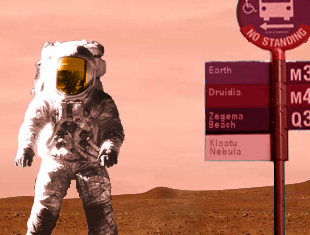 On the 5th of February 1974, NASA’s plucky Mariner 10 space probe zipped past the planet Venus at over 18,000 miles per hour. Mission scientists took advantage of the opportunity to snap some revealing photos of our sister planet, but the primary purpose of the Venus flyby was to accelerate the probe towards the enigmatic Mercury, a body which had yet to be visited by any Earthly device. The event constituted the first ever gravitational slingshot, successfully sending Mariner 10 to grope the surface of Mercury using its array of sensitive instruments. This validation of the gravity-assist technique put the entire solar system within the practical reach of humanity’s probes, and it was used with spectacular success a few years later as Voyagers 1 and 2 toured the outer planets at a brisk 34,000 miles per hour.
On the 5th of February 1974, NASA’s plucky Mariner 10 space probe zipped past the planet Venus at over 18,000 miles per hour. Mission scientists took advantage of the opportunity to snap some revealing photos of our sister planet, but the primary purpose of the Venus flyby was to accelerate the probe towards the enigmatic Mercury, a body which had yet to be visited by any Earthly device. The event constituted the first ever gravitational slingshot, successfully sending Mariner 10 to grope the surface of Mercury using its array of sensitive instruments. This validation of the gravity-assist technique put the entire solar system within the practical reach of humanity’s probes, and it was used with spectacular success a few years later as Voyagers 1 and 2 toured the outer planets at a brisk 34,000 miles per hour.
The Martian Express
Subscribe to:
Post Comments (Atom)

No comments:
Post a Comment